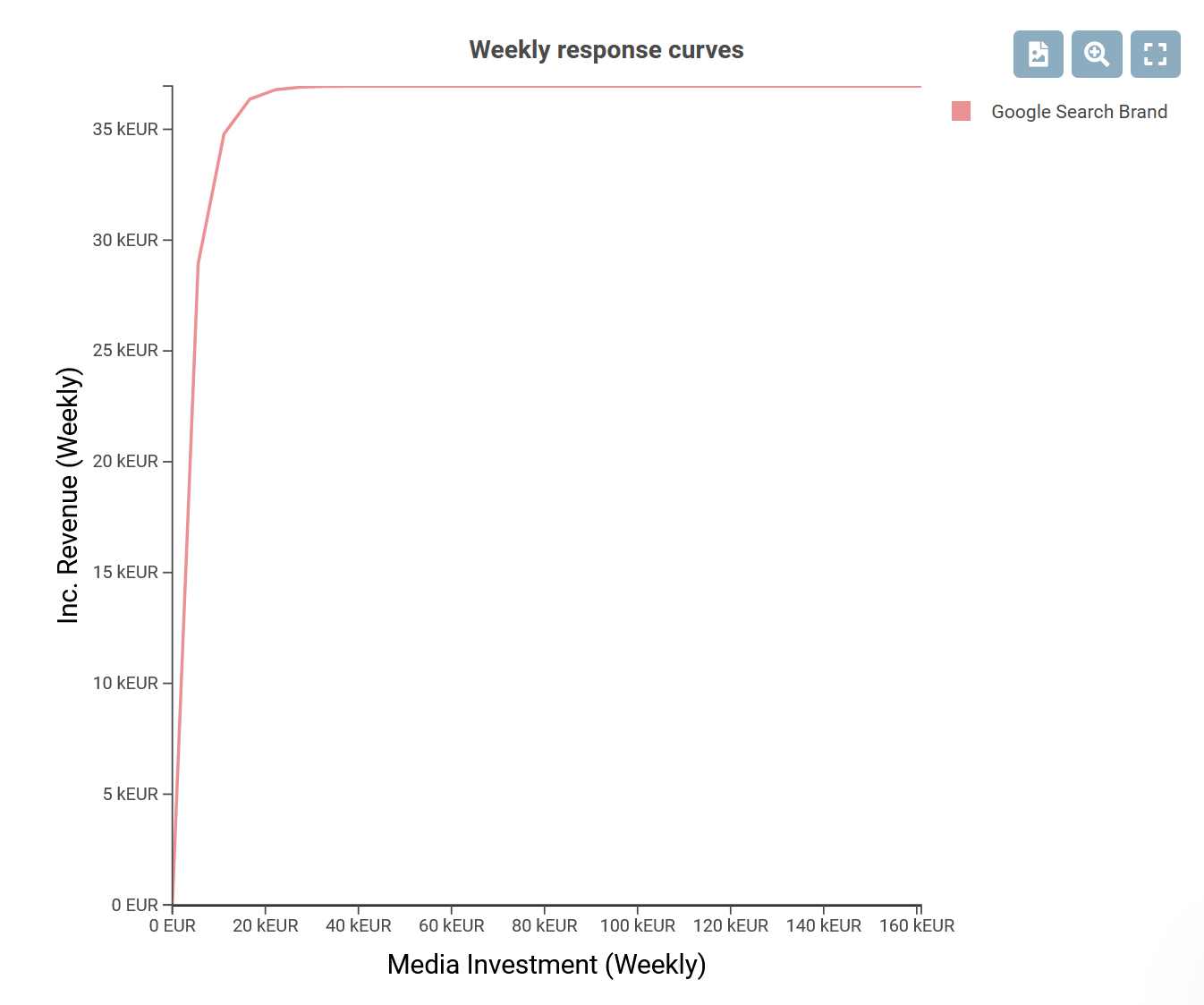Blog
Should You Include Branded Keyword Paid Search Spend in Marketing Mix Modeling (MMM)?
April 16, 2024 | Lauri Potka, Juha Nuutinen, Mikko Ervasti, Carmen Bozga

LinkedIn is definitely the place to go if you want to exchange knowledge and insights with professionals. In this thought-provoking post, Steve Kozel raised a controversial question to marketing mix modeling (MMM) experts: "Should branded keyword paid search spend be included in MMM?". This questions opens up a critical discussion on the integration of branded keyword paid search into MMM to understand its return on investment (ROI), incrementality, and saturation curve. In this blog post we will do our best to answer this question based on our experience at Sellforte.
For simplicity, we will call “branded keyword paid search” in this post as “Branded Search”
This post is based on the answer of Lauri Potka, Chief Operating Officer at Sellforte.
Understanding Branded Search
Before we dive into the topic, let's clarify what we mean by Branded Search. This refers to the budget allocated for paid search advertisements that include the brand's name or specific trademarks. The objective of this type of advertisement is to capture the attention of users already searching for the brand or its products, theoretically leading to higher conversion rates since the search intent is already skewed towards the brand. Another objective is not prevent competitors’ attempt at showing on top of search results of a brand.
Why should you include Branded Search in MMM?
There are two main reasons to include Branded Search in MMM:
- You can start measuring its ROI, based on true incrementality, and not based on attribution-reported ROAS or Ad platform-reported ROAS, which do not reflect real incrementality of branded search. As an example, Google Analytics 4-reported ROAS for Branded Search is often 2-10x compared to what incrementality-calibrated MMM reports as its ROI.
- You will get the estimated saturation curve. This information enables you to find the investment level where the channel starts to saturate, and thus find the optimal level for your branded search investments.
Below is an example of marketing response curve. Find our more here .

Moreover, one additional benefit of including branded search is to have more of your marketing spend in the model. The more of your media spend is included, the less risk there is of misattributing sales/conversions to wrong media in the model.
What are the challenges?
While it is important to integrate Branded Search in MMM, this comes with its own set of challenges. The main hurdle is the strong correlation between Branded Search and sales. The reason for high correlation is what often happens in a buying journey:
- A person wants to buy something from an online store.
- The person opens Google/Bing and searches for the name of the online store.
- The first item in search results is a search ad of the online store.
- The person clicks the search ad and proceeds to buy the desired product(s).
The challenge is that people were not necessarily driven to the store by the brand search ad. The original driver of the conversion could have been another form advertising that happened already earlier in the buying journey, or the conversion could have happened even without advertising.
If Branded Search is modeled with non-informative priors (assumptions made without substantial prior evidence), it is very likely that MMM overestimates the real incremental conversions that it is driving.
What modeling approaches should you take into consideration?
The main modeling debate for Branded Search is currently between two options:
- Branded Search is modeled like other channels as part of incrementality-calibrated MMM. This model directly estimates impact of Branded Search on sales, and it is incrementality-calibrated with incrementality tests and/or incrementality-factor benchmarks. This is a simple model to set up, and straightforward to interpret. With a good calibration framework, one can also address the challenge of high correlation with sales.
- Causal / hierarchical model is built for Branded Search by including an additional structure to the MMM that takes causal relations into account. The additional structure tries to estimate how other media and non-media factors (e.g., seasonality) are driving branded search volume. This way the high contribution given to branded search by a simpler model is attributed back to the media that drove branded search volume. The argument for the more complex model is that it reflects real world behavior better. The counter-argument for using this modeling approach is that it increases complexity of the modeling effort, reduces result traceability, and makes incrementality calibration more difficult. Results are more difficult to understand, as different media interactions have to be analyzed as (i) direct impact from media on sales, and (ii) indirect impact from media on sales that happen through the increased search volume.
In building a Marketing Mix Modeling you often have to make trade-offs in terms where you invest your time in. As a general rule, we recommend to spend most time in model development in areas where you have the largest opportunity to optimize marketing. Considering the challenges mentioned earlier, the modeling approach you choose to take for branded search should be tailored based on the proportion of your marketing budget dedicated to branded search:
- Branded Search is 0-5% of media budget: This is the percentage we typically see invested in Branded Search. In this case, we recommend modeling its impact directly on sales, and conduct high quality incrementality calibration for the channel. The main objective should be making sure that the incrementality of Branded Search has been accurately calibrated through lift tests or benchmarking against incrementality. This approach enables you to get sufficiently accurate ROI estimate for Branded Search, while letting the modeler focus majority of modeling time on deriving high-quality insights from larger spend activities, such as obtaining campaign-level insights for Performance Max campaigns.
- Branded Search is 10%+ of media budget: A causal / hierarchical modeling approach might make sense, as the benefits of more detailed modeling start outweighing the downsides of increased modeling complexity.
Key takeaways and best practices
- Include Branded Search in your MMM: This enables you to optimize its ROI
- Conduct incrementality-calibration for Branded Search: This enables you to achieve accurate ROI estimate, independent of the modeling approach you choose
- Consider causal / hierarchical model only if Branded Search is one of your top media (10% spend)
Curious to learn more? Book a demo.
Related articles
Read more postsNo items found!